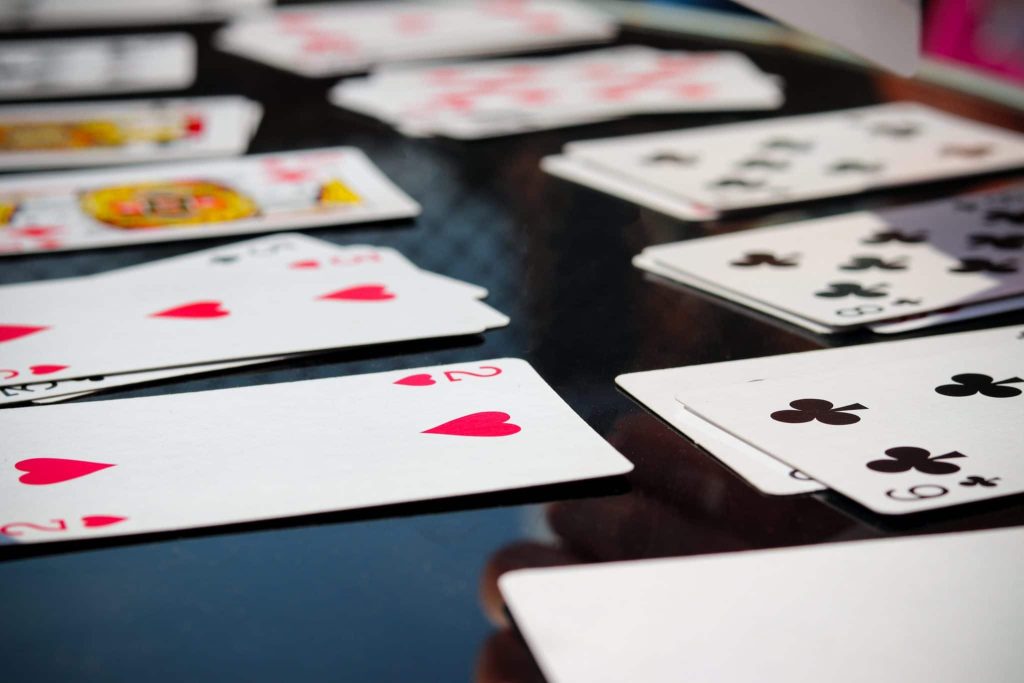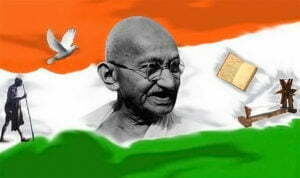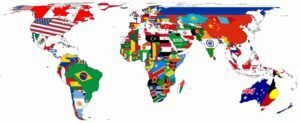The 3rd of May, 1913, was a watershed occasion for Bombay, India. The city may have been suffering from the searing summer heat, but that didn’t stop people from waiting for seats at Girgaon’s Coronation Theatre to see the first feature film of India, Raja Harishchandra. The 50-minute silent picture included a film length of 3700ft with Marathi and English title cards. It was directed, produced, and co-written by Dhundiraj Govind Phalke, better known as the father of Indian cinema, Dadasaheb Phalke.
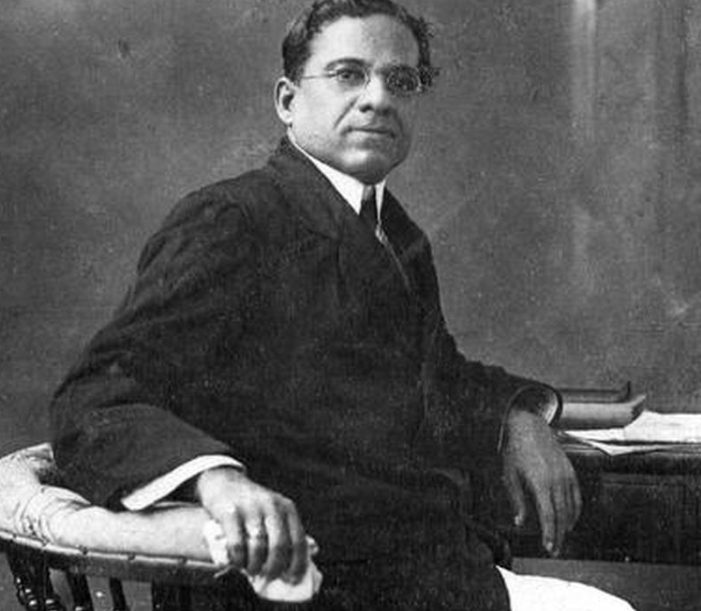
Let’s learn more about how Dadasaheb Phalke made this film.
The Birth of Raja Harishchandra
In the 1900’s most people only regarded plays and live performances as entertainment. In fact, no Indian could even imagine there being another type of entertainment, but, that all changed in 1913.
Dadasaheb Phalke viewed his first movie, a French film called “The Life of Christ” when he was working in the printing sector. This experience motivated him to make a film of his own based on the story of Indian gods. Dadasaheb Phalke went on to study the art and technique of filmmaking in London. While returning, brought with him the essential shooting equipment: a camera, raw film reels, a perforator, and a printing machine.
The Making of Raja Harishchandra
The Story
Throughout his career, Dadasaheb Phalke dabbled in photography, lithography, architecture, amateur dramatics, as well as magic. While working at the lithography press of legendary painter Ravi Varma, Dadasaheb Phalke was strongly influenced by a series of Varma’s paintings of Hindu gods. This in turn inspired Phalke’s own portrayal of numerous gods and goddesses in the films he later made.
The Raja Harishchandra movie(one of Dadasaheb Phalke’s films influenced by Raja Ravi Varma’s paintings) was based on the fabled story of a great and honest ruler who gave up his kingdom, wife, and child to fulfill a commitment to Rishi Vishwamitra. God, moved by his nobility and honesty, conferred divinity upon him and returned what he had taken away.
Funding for the Movie
Dadasaheb Phalke funded the movie by himself. When he returned to India, he cashed in his life insurance policies and his wife sold her jewelry to obtain the money required to make the movie.
Recruiting the Cast
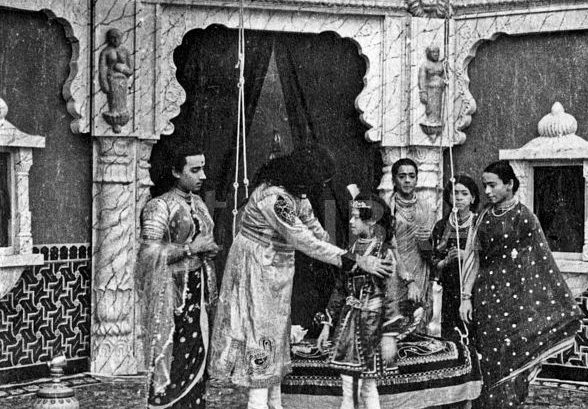
Raja Harishchandra’s cast involved Marathi stage actor Dattatraya Damodar Dabke as the lead, Raja Harishchandra. However, despite his efforts, he failed to find an actress to play Raja Harishchandra’s wife, Taramati, as the acting was not seen as a legitimate profession for women in 1913. Finally, for the character, he recruited a male actor, Anna Salunke, who worked as a chef in a restaurant. Bhalchandra D Phalke, his own son, was cast as Lohitashwa, Harishchandra’s son.
The Shooting
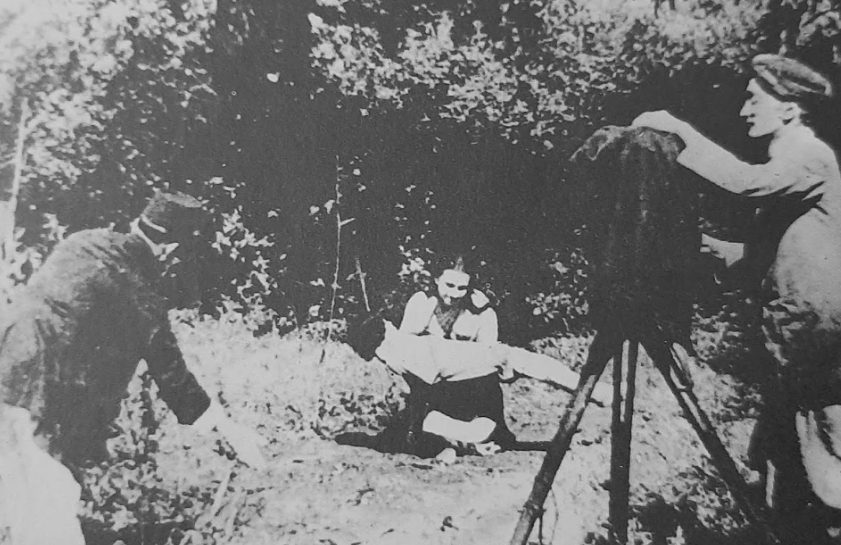
Dadasaheb Phalke Shooting For Raja Harishchandra
Phalke established a studio in Mathura Bhawan, located in Mumbai’s Dadar district, where he shot most scenes from the Raja Harishchandra movie. However, the outdoor sequences of the film were shot in a hamlet near Pune.
The film took Phalke seven months and 21 days to complete, during which his wife, Saraswati Phalke, took care of all of the actors and crew’s requirements. She was in charge of feeding the whole production staff, cleaning the actors’ outfits, and painting the film’s posters. She handled a variety of other technical aspects, as well.
The Acting
The acting was done in the style of traditional Indian folk theatre, the impact of which would last for decades in the Indian film industry. Due to the absence of sound, there were title inserts between pictures that explained the story. These title plates may be found in two languages – English, the language of the elite, and Hindi, the language that the masses understood.
The Release and Reception of Raja Harishchandra
Dadasaheb Phalke advertised his films as “A show made up of 57,000 pictures. A two-mile-long image. All for the price of three annas”, in order to entice his audience away from the stage and onto the screen. For the first several days, he also preceded the film with a dance performance by two European dancers. Soon, people began to flock to the theatres, and the first feature film of India was a hit, playing in the Coronation Cinematograph for 23 days. The film was also shown in London a year later.
Final Thoughts
As Raja Harsihchandra was a financial triumph, it established a new standard in the Indian cinema industry. However, not only the film, even its director, Dadasaheb Phalke was revolutionary.
In 1917, Phalke founded the Hindustan Film Company with the support of numerous partners and went on to make multiple films. Similarly, he was the first person to cast a female performer in the lead role in his film Bhasmasur Mohini. These achievements make up only a small part of his contributions.
You may watch the video below for more information.
https://www.youtube.com/watch?v=GeuHLYtONYQ
Overall, we at Podium School believe that Dadasaheb Phalke’s movie paved the path for the Indian cinema we know today. It inspired talented Indians to dream about the film industry and what it could become, leading to the production of the first talkie, or a movie with sound, which would not arrive in Indian film until 18 years later with Alam Ara.
You can watch a snippet of Raja Harishchandra below.
Share with your friends

